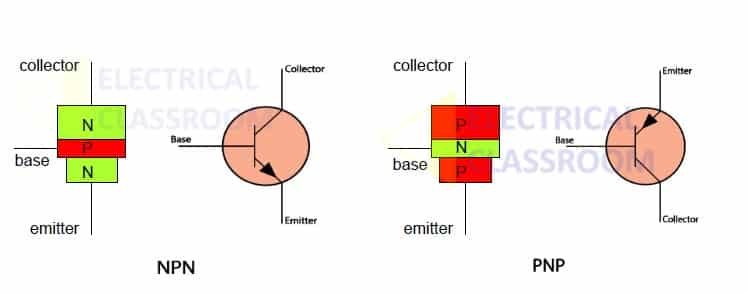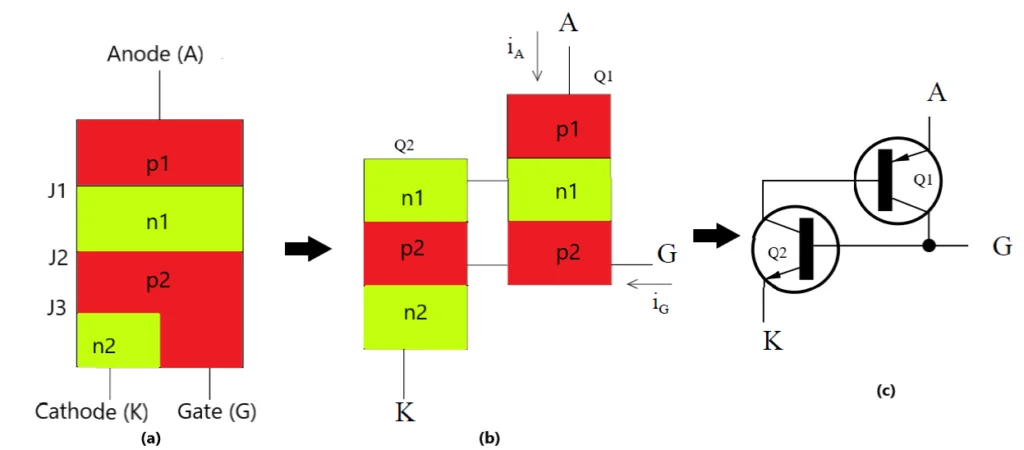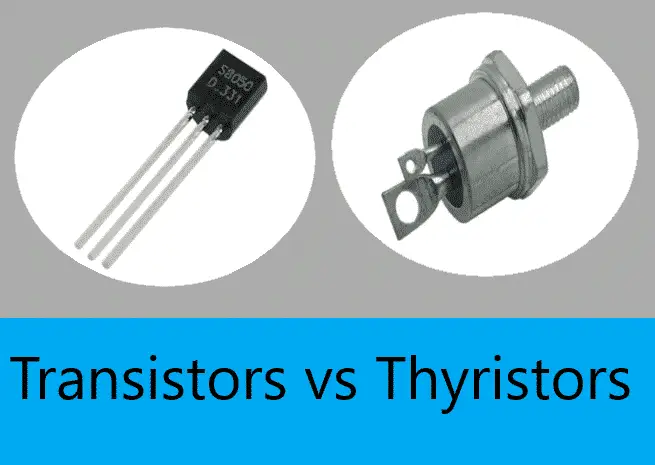Transistors and thyristors are semiconductors switching devices. They are used for controlling current flow in circuits. They play a very important role in all power conversion devices. In this article let us compare and understand the difference between transistors and thyristors.
The key difference between Transistors and thyristors
| Transistor | Thyristor | |
|---|---|---|
| Basic Structure | A transistor is a three-layered device, made by arranging p-type and n-type semiconductors alternatively. | A Thyristor is a four-layered power electronic device, made by arranging p-type and n-type semiconductors alternatively. |
| Terminals | Base, Emitter, and collector. | Anode, cathode, and gate. |
| Power rating | Designed for use in low-power electronic circuits. However, power transistors are capable of operating at higher voltages. | Has a high power rating ranging between 600V and 5000V and an operating current up to 5500A. |
| Switching method | A transistor can be switched to conduction by applying a current to its base. | Conduction can be triggered by applying gate current. |
| Nature of switching | Continuous current supply to the base. | A trigger pulse is applied to the gate. Once it enters the forward conducting mode, it stays in the conduction mode until the anode current falls to zero. |
| Controllability | The magnitude of current flow between the collector and the emitter can be controlled by controlling the base current. | The magnitude of current flow between the anode and the cathode cannot be controlled. |
| Commutation requirements | No commutation circuit is needed. | Thyristors require commutation circuits for the turn-off. |
| Applications | Mainly used in amplifiers, electronic switching circuits, oscillators, vibrators, etc. | Thyristors are used in high power switching circuits, motor speed control circuits, rectifiers, and inverters. |
| Cost | High | Low |
Transistor
A transistor is a current-controlled device, meaning that the current flow through the collector and emitter is controlled by the magnitude of current flowing into the base.
Symbol and terminals in bipolar junction transistor
Emitter: A heavily dope region, that passes charged particles to the base.
Base: A thin and lightly dope region. Base passes the charged particles from the emitter to the collector.
Collector: The largest region of a transistor. It is lightly doped than the emitter but heavily doped than the base. Bipolar junction transistors aid in regulating the current flow in a circuit. The current that flows through the transistor is in proportion to the amount of biasing voltage that is being applied at the base terminal.

Thyristors
Thyristors are high-speed semiconductor switching devices that are made up of four layers of alternating p and n-type materials. They are used in AC/DC switching and AC power control applications. The thyristor symbol is a diode symbol that has three terminals, the gate, anode, and cathode.
The anode is the positive terminal and the cathode is the negative terminal of the SCR. It has four layers of alternating P and N type material. It also has an additional control terminal called the gate. The presence of the gate allows the SCR to be triggered into conduction. It is a unidirectional device that allows the current to only flow when in one direction and opposes the flow in the opposite direction.

